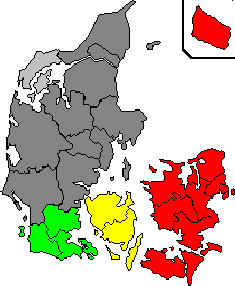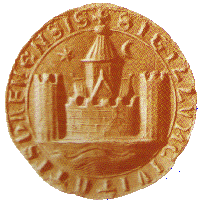

|
http://ddd.sa.dk/ »The Danish Demographic Database« is the cooperative efforts of the »Danish Data Archives«, the »Danish Emigration Archives« and the Centre of Microfilming of the Danish State Arhives and »Kulturnet Danmark« subsidized the projectstart. Information from Census and Church records from Denmark are being entered by volunteers and can be accessed and/or downloaded. The records are far from complete as both the entering of this data and its organization is a slow and ongoing process. In order to access these files, it is necessary to send in an application .... committing you to only use this for personal, non-commercial use. If accepted you will be provided with a password in order to access this data.
To explain terms of the administrative division, Peter Kristiansen wrote in news:soc.genealogy.nordic:
»When working with family research in Denmark, there are four
geographical units you have to be familiar with:
Ejerlav: association of houseowners - bad translation, but that is what
my vocabulary says. A number of properties, with or without buildings,
forms a village [landsby].
A group of villages forms a parish [sogn]. In one of the villages
you'll find the church. Before 1850 you have very few parishes with
more than one church.
A group of parishes forms the shire [herred].
And a group of shires forms the county [amt].
Today Denmark is divided into 14 counties, but before 1970 there was 23
counties.
You have two kinds of parishes - village parishes and town parishes (in
english you'll probably use the word borrough).
Village or countryside parishes, can contain from one to several
villages, and farms.
Town parishes are limited to the town borders, and in larger towns you
can find several parishes. The town-churches can also have parishes
outside the town limits, and they are in danish called landsogn -
landparish.
The kommune, the municipality, was made during the 1840's, and are
until 1970, similar to one or several parishes. Normally two parishes
made a municipality.«

Copenhagen from olden times, has had special privileges as it's own county district and provinceial towns appear slight different than parishes both in curch and census records since the number of people is larger. Streetnames, house and department or floor numbers is often noted in more recent curch records and of course always in census.